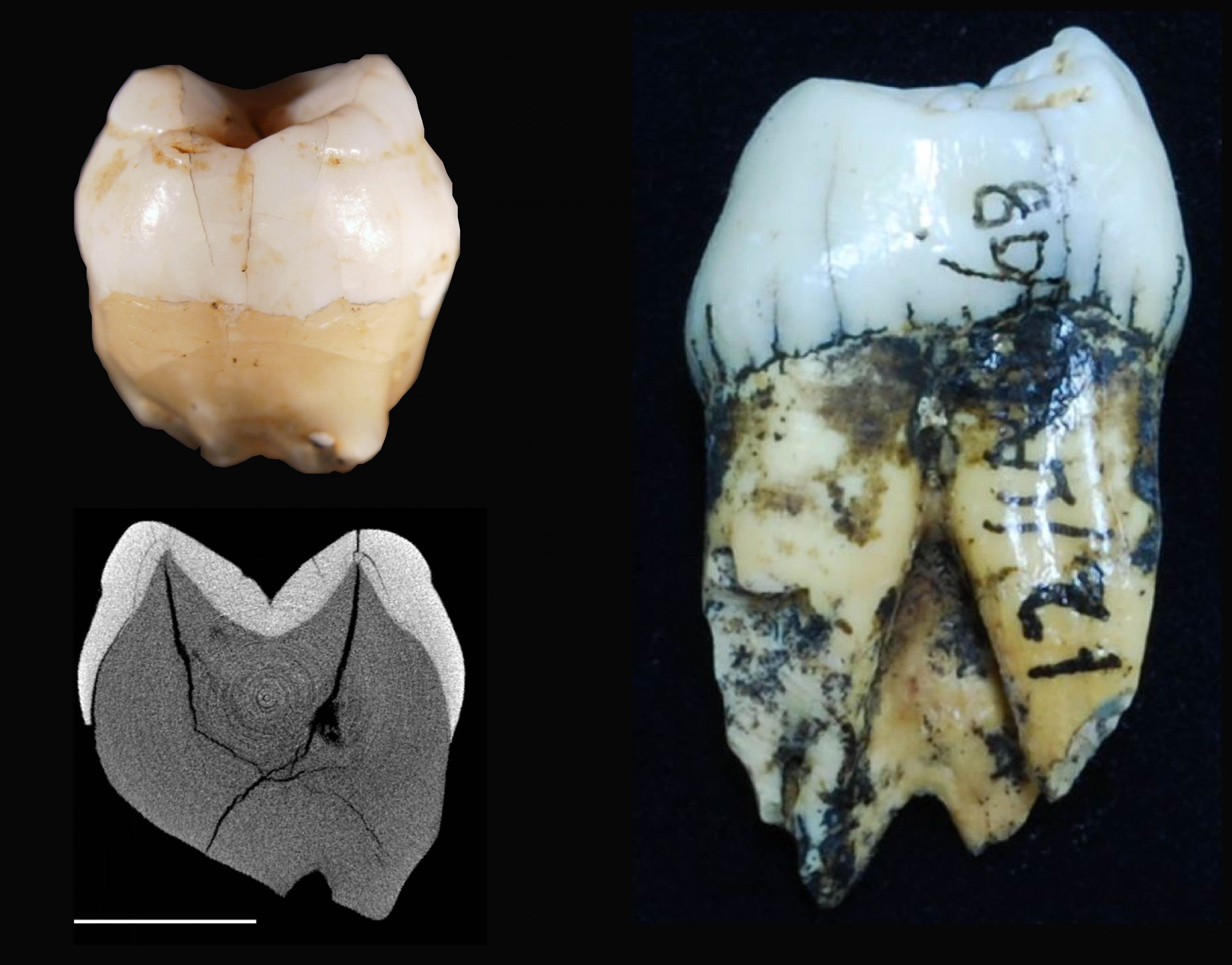
The first humans arrived in Indonesia thousands of years before previously thought—which could mean they were present for an eruption at the Lake Toba supervolcano just over 71,000 years ago.
Newly analyzed fossil evidence also places these early humans in rainforest environments, causing a major rethink of how these people migrated across the land after leaving Africa about 30,000 years earlier. Researchers have long theorized that early humans likely moved along the coast because it was safer and had better resources than the jungle terrain.
How and when humans dispersed across the globe are ongoing questions that grow more difficult to answer as new fossil evidence is unearthed. For example, the earliest Homo sapiens fossils ever found were recently discovered in Morocco—far away from the parts of south and east Africa we tend to think of as the "cradle of humanity."

The general accepted migratory route for early humans is via northern Africa and into the Middle East. From here the path splits, with one going toward Europe and the other into Asia, moving south through India and down to Thailand before crossing into Indonesia and Australia. The timeline for this dispersal is incomplete because the fossil evidence is limited.
In a study published in the journal Nature, scientists have now accurately dated two human teeth first discovered on the island of Sumatra in the late 19th century, showing our ancestors were living there between 73,000 and 63,000 years ago. Genetic studies have placed humans in Southeast Asia by 60,000 years ago, but the previous oldest fossil evidence dated to just 45,000 years. This new evidence pushes the timeline back thousands of years farther.
The teeth were found in the Lida Ajer cave in the Padang Highlands of Sumatra. They are the first evidence of humans in Indonesia and the first evidence of humans occupying a rainforest environment.
The finding has surprised archaeologists. Until now, Kira Westaway, an environmental scientist at Macquarie University in Australia, tells Newsweek, "The earliest evidence for modern humans using rainforests environments [was from] around 45,000 years ago in Niah Cave, Borneo." These regions seem an unlikely place for early humans to live. "Rainforests are difficult environments to live in," says Westaway. "They require technological innovations and sophisticated hunting techniques for survival."
This research reveals that people inhabited the rainforest far earlier than previously suspected. "Finding an early modern human presence in a rainforest location is remarkable as it suggests that these skills were in place by this time," says Westaway.
The team also highlights the potential link with the supervolcano eruption at Lake Toba during this period. Had these early humans arrived at the upper limit of the new timeline—73,000 years ago—they would have been there for the event. Westaway explains that a recent recalibration indicates the Toba eruption occurred 71,600 years ago. "This means that there is a slim chance that the modern humans arrived in the region just before the event—in which case they would have been affected by the extensive volcanic ash cloud and the devastating effects on the environment," However, Westaway acknowledges, "it's more probable they arrived after the event."

More fossil evidence will be required to put an exact time of arrival in Indonesia, but the new chronology fits with recent research showing when humans reached Australia. That study, published in Nature in July, pushed back the date of arrival by 15,000 years, with fossil evidence showing they must have arrived in northern Australia by at least 65,000 years ago.
"It's like we have found the missing piece in the puzzle of human dispersal in the region," Westaway says of the Indonesian teeth. "When the Australian evidence was published a few weeks ago, many people were asking why the evidence in Southeast Asia lagged behind by almost 20,000 years. The Lida Ajer research has addressed this."
Chris Clarkson, who led the Australian research but was not involved with this work, calls the new discovery very timely. "The dating of fossil modern-human teeth from Lida Ajer 73,000 to 63,000 years ago provides the missing link—that is, the first unequivocal evidence of modern human presence in [Southeast Asia] likely just prior to their first appearance in Australia at 70,000 to 60,000 years ago," says Clarkson, an archaeologist at the University of Queensland. "This is a really fantastic result and will renew the search for modern-human sites in Southeast Asia of comparable age, including evidence of their way of life."
Uncommon Knowledge
Newsweek is committed to challenging conventional wisdom and finding connections in the search for common ground.
Newsweek is committed to challenging conventional wisdom and finding connections in the search for common ground.
About the writer
Hannah Osborne is Nesweek's Science Editor, based in London, UK. Hannah joined Newsweek in 2017 from IBTimes UK. She is ... Read more
To read how Newsweek uses AI as a newsroom tool, Click here.






